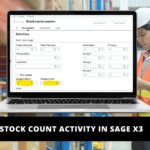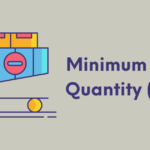As a business owner, you have to track and control the expenses of the business. A business considers an inventory as its biggest asset. For any business, it is essential to have an inventory strategy in place to reduce risks and mitigate high carrying costs. Tracking inventory carrying costs every day is a challenging task as it has multiple components associated with it which can impact the overall cost.
In this blog, let us learn more about the types of inventory costs and comprehend the common factors that impact costs.
What is Inventory Cost?
Inventory costs encompass all the expenses incurred in the inventory. It involves the cost of purchasing, storing and managing goods throughout the supply chain system. The inventory carrying costs will exceed the initial cost if the unsold finished goods are kept in the inventory for a long period of time.
Relying on supply chain management software will help in the efficient management of inventory and will help in reducing the carrying costs of goods.
Example of Inventory Carrying Cost
Inventory carrying costs can be understood better by considering an example of an importer of goods. When a business imports goods to his country, it is first received at the dock. Later, it has to undergo all the customs department clearance. Only then it will be allowed to go to the company’s warehouse.
Meanwhile, if the goods are caught up due to inefficiencies in the documentation, then they will be stuck in the customs department for clearance. The customs department levies the carrying costs and they tend to rise. Based on the value of goods and the volume or space they consume, the carrying costs are incurred.
We can assume by taking into account these additional expenses incurred by a business owner on goods, akin to the interest charges borne by the business owner, which often go unnoticed in typical circumstances.
Here, assume the dock as the warehouse and the customs department charges are similar to the principle value of goods that the business loses. The business owner here has to pay the penalties to the customs department, however, the difference is that the interest expense a business loses is not taken into consideration.
Also Read : What is ABC Analysis in Inventory Management System?
Importance of Inventory Cost
Inventory is the major component of the business. Monitoring and tracking it is essential for the company as most of the capital is tied to it. This directly impacts the business revenue if the inventory is poorly maintained.
If you have good knowledge about your inventory, you can seamlessly manage it by reducing its overall costs and increase the bottom line. Some of the ways to manage inventory are listed below.
- Accurate inventory forecasting is required to monitor and manage the inventory levels.
- Storage and warehousing costs can be managed by implementing strategies such as warehouse slotting etc.
- Inventory discrepancies can be eliminated by applying the right inventory evaluation methods.
Three Categories of Inventory Cost
After understanding the meaning of inventory costs, now, let’s move to the three crucial categories of inventory cost.
1. Ordering Costs
Ordering costs are additional costs added or dismissed during replenishing inventory. Ordering costs include paying for the new batches of inventory, additional costs such as first-mile delivery, warehouse receiving and other fees are incurred. All these costs add up to form a higher cost.
So, when calculating inventory costs, look for additional charges or ordering costs. With the cost of procurement of raw materials, add charges pertaining to shipping inventory to a warehouse or final destination, the costs incurred during receiving and storing inventory etc.
2. Carrying Costs
Inventory carrying costs cover all the expenses related to storing goods in the inventory till they are sold. Depending on the type of products and the storage costs, the inventory carrying costs vary. In addition, costs such as taxes, labour wages, insurance, and warehouse rent are incurred along with the main costs. Again costs are incurred if the damaged or perished goods have to be replaced.
3. Stockout Costs
Stockout in the inventory management software refers to the shortage of goods. Assume that your inventory fails to update an out-of-stock item, but the customers place the orders continuously. You have the task of informing the customer and refunding the amount. Here, the cost of a refund is borne and your business loses sales.
Types of Inventory Costs
Inventory Costs are all the costs associated with accurate inventory management. It is important for your business to calculate inventory costs. Additionally, the cost of maintaining inventory storage systems also should be calculated. The different types of inventory costs are enumerated below.
1. Storage Costs
The costs incurred to manage the inventory storage system can be termed as the storage costs. Storage costs are recurring costs which include rent, utilities, security and labour wages. If you are keeping your stocks for too long, then your inventory costs will increase. This scenario occurs if your inventory is unsellable.
Carrying costs will be charged till your inventory disposes or donates the unsellable products. The cost of the inventory will impact even the bottom line if these products are held for too long.
2. Capital Costs
Costs associated with buying an entire warehouse space are an example of capital costs. It is a one-time big amount charged to physically store your inventory. Comparatively, the capital cost is one of the most expensive inventory-associated costs.
For example, if you run out of warehouse space, you must expand by buying more space to store your goods. Warehouse capacity should be audited every year as it is one of the most important aspects of the inventory.
3. Theft and fraud
In this inventory cost type, the costs associated with inventory shrinkage are considered. It includes criminal activities such as theft and fraud. The threats are from malicious customers and dishonest employees. To solve this, a robust security system has to be set up.
4. Fees (Tax and insurance)
Your inventory costs also include the cost of tax and insurance. These costs cannot be avoided as they will have bad implications down the line. Given that the actual costs and requisites can differ across industries, we advise seeking expert advice on this matter.
5. Obsolescence costs
When the inventory goods get damaged in the storage, the cost of inventory increases. In such cases, the inventory is likely to become obsolete. It happens if the inventory is not sold for a longer period of time. Due to this, the business incurs a loss and have to pay hefty inventory cost.
6. Poor Investment Budgeting
If your inventory management lacks accurate strategies or is poorly managed, huge risks will occur threatening to affect your business negatively. The cost of inventory has to be balanced to increase the bottom line. Let me give you an example of improper inventory. Buy inventory products after properly planning, or else you will end up with inventory you don’t require. As a result, you will have unsold items which will increase the carrying cost of your business.
Also Read : Importance Of Inventory Management Software For Small Businesses
How to Calculate Inventory Cost?
The costs associated with your inventory directly influence your profits. Therefore, it is crucial to precisely calculate these expenses in order to have a transparent understanding of your inventory expenditure.
Inventory cost = (Beginning Inventory + Inventory Purchases) – Ending Inventory
Are you tracking the lead time of your products?
Take an example: suppose a business sells 4 units of Product X in a given day. After placing an order, it takes 10 days for Product X to arrive at the warehouses. To meet customer demands, there must always be enough stock in inventory to last for at least 10 days.
This implies that a minimum of 30 units of Product X should be kept on hand, which will be sufficient for 10 days before restocking is required. A prudent approach would be to maintain a stock of at least 33 units of Product X.
Let us comprehend stock categorization. Here all the stock items have to be categorized under the below four classifications.
- High value – Fast moving
- High value – Slow-moving
- Low value – Fast moving
- Low value – slow-moving
⇒High value – Fast moving
Analyse the sales trend of the items and find out the quantity sold per day. The stock in the warehouse equivalent to the lead time should be stored in the inventory depending on this parameter.
Suppose the lead time of a high-value good is 7 days. Assume that this particular product is sold in 100 quantities per day. Then 700 pieces of the product should be stored in the inventory.
⇒High value – Slow moving
In this, the value of the item is high, but the sale is low. The product can be ordered only when the customer places an order. The ordering pattern of the customer should be analysed.
For example: If there is a specific high-value product that is typically ordered by a specific group of customers in April, it would be prudent to maintain stock of this product exclusively for that month in order to meet the demand.
⇒Low value – Fast Moving
Here, the value of the stocks is low, so it won’t impact if these stocks are stored in the inventory. There won’t be much holding costs to store the low value-fast-moving goods. A good strategy will help in determining the lead time by analysing the amount of stocks that have to be stored per day.
⇒Low value – Slow moving
The items under this category include spare parts of any machinery or items which is not available with any trader. Most of the business owners ignore these items and won’t stock up these goods. Plus, holding costs for these items won’t hurt the business much. Sales patterns for these items should be analysed for about 4-5 years and then a good strategy should be developed.
Conclusion
Inventory costs are also known as holding costs. Inventory cost can be referred to as all the costs incurred while ordering and holding products. Carrying cost, administering paper work cost etc. are included in the inventory cost. The types of inventory cost include ordering cost, storage cost, theft and fraud, fees, obsolescence cost, capital cost, carrying cost and stockout cost.
Implement ERP Software to gain accurate demand forecasting which will help in storing the right amount of inventory.







